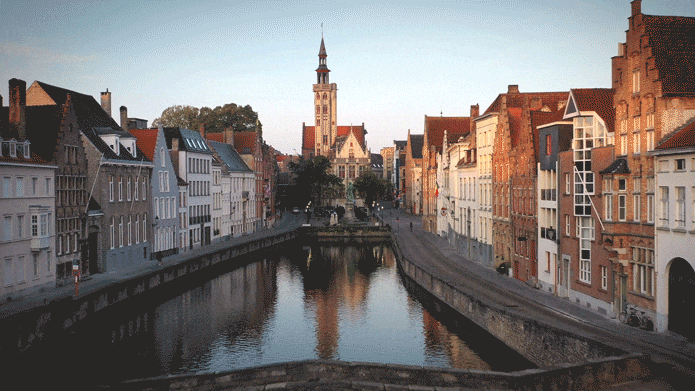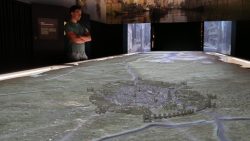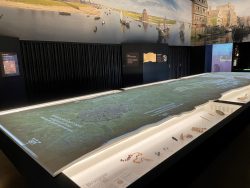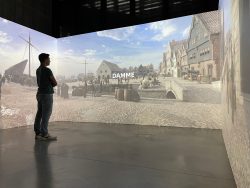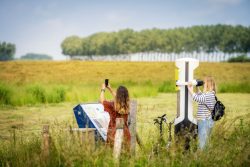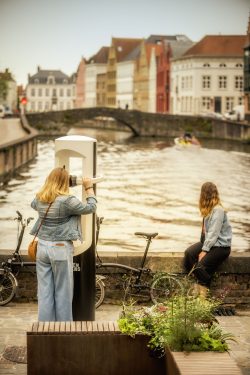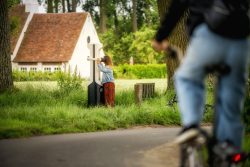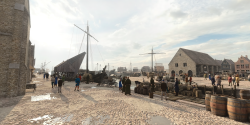Medieval Bruges’ pivotal role as a commercial harbour and a centre of art, culture and high finance constitutes an important element in the European cultural heritage and collective memory. The historic centre of Bruges is a Unesco World Heritage site visited by millions each year. However, until recently little to nothing was known about the unique system of outer harbours that formed the basis of Bruges’ success. These were located along the Zwin, a 25km long tidal inlet that connected the city to the North Sea. A decade of fundamental interdisciplinary research at Ghent University, led by archaeologists, revealed the location, layout, functions and decline of now lost harbour towns and/or medieval harbour infrastructures in towns that still exist. Through interdisciplinary collaboration between archaeology, history, geology and palaeo-environmental research, Lost Ports of the Zwin investigates the role of Bruges as a late medieval harbour and the entire maritime-cultural landscape of Zwin region. The fundamental research of the project was (and is) funded by the Research Foundation Flanders – FWO (2013-2017) and Ghent University’s Special Research Fund (2019-2024).
Over the course of 2018-2021, the team behind Lost Ports of the Zwin worked together with a consortium of public and private partners and stakeholders to bring the data and results of this research to a wider audience. They succeeded in visualising and digitally reviving Bruges’ medieval harbour landscape in a highly immersive way (3D reconstruction, VR/AR technology), including high-quality digital reconstructions. Both a (semi)permanent cycle route and temporary exhibition were developed, next to many other public and stakeholder engagement initiatives, to submerge the visitor in the Middle Ages and connect the present to the past land- and seascape. In the exhibition, both AR and VR experiences (Monumental Augmented Table, immersive space, sandbox etc.) were combined with high-quality scenography and four showcases with in-depth information on the maritime past of the region.
#LTMThursday interview
Jan Trachet and Maxime Poulain, both leading archeologists of the project Lost Ports of the Zwin, share how this project came into being, the importance of multi-professional and interdisciplinary cooperation and how their research project takes cycling visitors of the Zwin Nature Park on a VR journey through time back to medieval Bruges – enhanced with original medieval dishes by food archaeologist Jeroen van Vaerenbergh.
Exhibition trailer and cycling route teaser
Impressions of the exhibition
Click images to view in full
Traveling through time by bicycle and getting a taste of history – literally!
In July 2021, the successful cycling route along the Lost Ports of the Zwin was launched. The cycling route is equipped with virtual reality viewers that show never-before-seen images of the Middle Ages, based on innovative archaeological research by Ghent University. Ports such as Sluis, Monnikerde, Hoeke, Damme and Bruges were once pinnacle ports in Europe. But the Zwin channel silted up and the ports of the Zwin disappeared. In 2022 and 2023, the Lost Ports of the Zwin cycle route will remain one of the banners of the Bruges Ommeland and the Coast.
VR Viewers along the Zwin nature park cycling route
Click images to view in full
The cycling route in the Zwin Nature Park offers a series of VR viewers that let visitors experience the exact same scenario they are looking at several hundred years ago.
Examples of the VR experience
The Middle Ages on your plate
Starting on 1 June 2022, cyclists and visitors can really get a taste of the Middle Ages at various locations along the route and in the Zwin region. Until the summer of 2021, Ghent University carried out excavations in the Zwin region, where the medieval outer harbors were once located. From these excavations and after sifting through old toll rates, surprising results emerged about medieval eating habits, the seeds used, the preparation methods, etc. Food archaeologist Jeroen van Vaerenbergh took a dive into the overflowing pantry of medieval Zwin and got to work with local entrepreneurs. For the contact with the Sluise entrepreneurs, Jeroen called in the reinforcement of culinary advisor Marcin Beaufort.
Unique Zwinhaven dishes
The food archaeologist experiments with mythical grain of paradise, Syrian rose water, Scandinavian pastries, mastelun flower, spicy beer, forgotten North Sea fish and much more. He not only cooperates with about 30 regional producers, ice cream makers, brewers and many more professions but also with bistros, restaurants, B&Bs. , delicatessens etc. to make contemporary creations with medieval ingredients or to search for the hidden Middle Ages in existing products.
